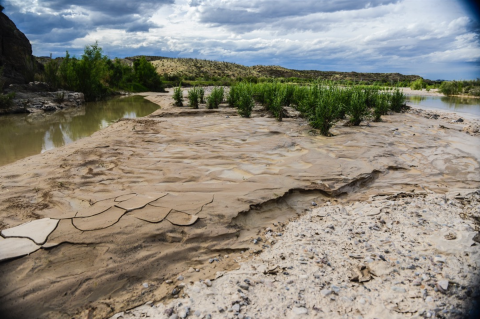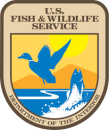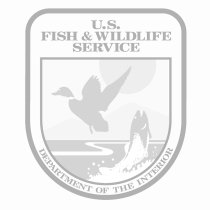Location
States
TexasEcosystem
River/streamIntroduction
Terlingua Creek runs for 84.5 miles through the Chihuahuan Desert before reaching its confluence with the Rio Grande in Big Bend National Park, Texas. For nearly 35 miles Terlingua Creek is a perennial stream providing a critical source of water for the flora and fauna in this semi-arid region. Multiple organizations are working with public and private landowners to restore the riparian riparian
Definition of riparian habitat or riparian areas.
Learn more about riparian woodlands and enhance grassland habitats throughout the Terlingua Creek watershed in an effort to enhance ecosystem function and resilience to drought.
Historically, the remoteness of the Big Bend region resulted in limited development along Terlingua Creek, preserving the integrity and ecosystem function of the riparian woodlands. However, the establishment of military forts and railroads in the 1850s increased development and land use change. During the first half of the 20th century, mercury mining operations in Terlingua led to a substantial degradation of riparian woodlands when miles of cord wood were purchased to fuel machinery. Additionally, the passive recovery of riparian woodlands was reduced by livestock grazing and the opportunistic use of land along the streambed for agricultural activity by American and Mexican settlers. Collectively, these land use changes degraded existing riparian woodlands and reduced native riparian vegetation establishment. After the establishment of Big Bend National Park in 1944, destructive activities within its 801,163-acre boundary were mitigated and the preservation of wetlands was encouraged.
Key Issues Addressed
Riparian communities along Terlingua Creek have been disrupted by mining and logging of riparian forests. Deforestation and fragmentation have decreased the ability of the riparian woodland to slow flood flows, retain sediments and nutrients, and promote aquifer recharge. As a result, flood intensity and altered sediment supplies have increased bank erosion and decreased recruitment and reestablishment of cottonwoods and other riparian vegetation. Baseflows, riparian aquifer levels, and aquatic habitat quality have declined. Drought intensifies and accelerates these negative impacts. Revegetating Terlingua Creek riparian areas is a critical step to limit the loss of species and ecosystem services.
Project Goals
- Increase riparian vegetation cover, specifically Fremont cottonwood and Goodding’s willow
- Improve habitat for riparian wildlife and aquatic species to include the Rio Grande silvery minnow
- Increase sediment retention and storage capacity of the riparian aquifer
- Establish nurseries to generate sustainable native plant material for harvest
Project Highlights
Rare and endangered species such as the Rio Grande Silvery Minnow, Yellow-Billed Cuckoo, and Mexican Stoneroller benefit from restored riparian woodlands.
- Site Characterization for Successful Establishment: Initial revegetation efforts with larger riparian plant species were unsuccessful because the geomorphology and ecohydrology of the study area were not sufficiently taken into consideration. Studies of flow seasonality showed that revegetation efforts should begin during the late winter when base flows and the risk of high scouring events are low. In addition, test pits are used to identify moist soils with the right conditions for willow pole planting and successful establishment.
- Harvesting Local Riparian Tree Material for Sustainable Supply: Harvesting thousands of two to three-meter long willow and cottonwood poles from surviving wetlands in Big Bend National Park reduces the cost associated with transporting and purchasing materials for the project. This project harvests only 20 to 25% of poles per stand to ensure a sustainable supply for the duration of the project and prevents harm to stands.
- Watershed Approach for Natural Downstream Revegetation: Rehabilitating the riparian woodlands along Terlingua Creek requires the establishment of willow and cottonwood propagation nodes at multiple upstream sites. Collaborations formed with private landowners in the watershed will improve conditions near the headwaters, which, in addition to restoring wetland function across the watershed, will increase resilience to drought.
- Revegetation Protocols: Low-lying willow trees that withstand scouring are strategically planted in unvegetated sites to increase nutrient and sediment retention and encourage subsequent revegetation with larger willow and cottonwood trees. A successful strategy for planting uses bundles of three willow poles, which ensures root establishment, and diamond-shaped planting patterns, which creates nursery conditions. At other vegetated sites, single poles of larger riparian species such as Fremont cottonwoods and Goodding’s willow will be planted to increase channel aggradation and aquifer storage capacity.
Lessons Learned
The success of the revegetation efforts is improved by understanding the ecohydrology and geomorphology of Terlingua Creek. Planting willow and cottonwood poles during late winter when baseflow is low and before major rainfall events reduces the risk that scouring events will harm plantings. Test pits are also useful to identify areas with moist and fine alluvial sediments ideal for willow pole planting.
Understanding the distribution of remnant riparian woodlands along Terlingua Creek was important for developing the wetland revegetation protocol. The natural distribution of willows in riparian woodlands resembles that of a teardrop or diamond configuration with the corners pointing in the direction of water flow to mitigate high flows, reduce scouring and to promote growth and greening. Planting multiple patches of willows in a diamond-shaped formation increases soil stability, soil moisture, and riparian vegetation cover which reduces scouring and high flows.
Successful willow establishment improves riparian and aquatic habitat. Revegetation has led to fine sediment accumulation and channel aggradation which improves the depth and extent of the aquifer. Revegetating degraded wetlands located on private land near the headwaters can create nursery conditions downstream and enhance natural regeneration of riparian woodlands.
Revegetated riparian wetlands create upstream and downstream nursery conditions that enables natural regeneration through the establishment of larger native riparian plant species.
Planting by hand increased establishment rates, but machinery or volunteer planting events may improve efficiency.
Coyote willow, a medium sized riparian species, resists scouring because it is low-lying and has a high probability of establishing in moist alluvial sediments.
Next Steps
- Stabilize streambanks by installing inexpensive flow retention structures at sites where willow establishment was unsuccessful due to excessive scouring and water-logged soils
- Establish nurseries near the project sites to grow cottonwood and willow plant material for sustainable revegetation efforts in the watershed
- Incorporate knowledge from an upstream private farm near the headwaters, where protective fencing has been in place to protect riparian woodlands for more than a decade
- Formalize a monitoring program to evaluate the impacts and long-term success/colonization of species
- Host workshops to increase landowner interest and participation in restoration along Terlingua Creek
- Identify a bigger picture course of action to preserve and restore Terlingua Creek riparian woodlands at risk from gravel mining, population growth, and land use change
Funding Partners
- American Bird Conservancy
- Alpine Test Services
- Bob Wirt, retired
- Commission on Environmental Cooperation
- Desert Landscape Conservation Cooperative
- Fred Phillips Consulting, Inc.
- Massachusetts Institute of Technology –Heidi Nepf and John Kondziolka
- National Park Service
- Rio Grande Joint Venture
- Rio Grande Scientific Support Services
- Sierra Club
- Student Conservation Association
- Sul Ross State University
- Texas Parks and Wildlife Department
- Thomas Alex, NPS retired
- U.S. Fish and Wildlife Service
- Utah State University – Dave Dean and Dr. Jack Schmidt
- Volunteers in Parks
- World Wildlife Fund
- Private Landowners in the Watershed
Resources
- 2017 Rio Grande Joint Venture Proposal: Seeking Contractors for Terlingua Creek Riparian Habitat Rehabilitation, Brewster County, Texas
- Texas Parks & Wildlife 2011 L.I.P. Bulletin: Annual Newsletter
- Presentation at the 2015 Lower Colorado River Multi-Species Conservation Program Colorado River Terrestrial and Riparian (CRTR) Meeting : Restoring the Rio Grande
- U.S. Fish & Wildlife Service 2016 Open Spaces Blog: Stepping Twice into the Same Stream: Terlingua Creek at Big Bend
- Volunteers in Parks
Contacts
- Jeffery Bennett, Conservation Delivery Specialist, Rio Grande Joint Venture: jbennett@abcbirds.org
- Aimee Roberson, Coordinator, Rio Grande Joint Venture (RGJV): ARoberson@ABCbirds.org
- Russell Martin, Wildlife Diversity Biologist, Texas Parks and Wildlife Division
- Megan Bean, Chihuahuan Desert Native Fish Conservation Areas Coordinator, Inland Fisheries TPWD: Megan.Bean@tpwd.texas.gov
- Brendan Witt, Biologist, Partners for Fish and Wildlife Program, USFWS: brendan_witt@fws.gov
Case Study Lead Author
Andrea Lopez, Graduate Research Assistant, University of New Mexico
Suggested Citation
Lopez, A. (2018). “Riparian Woodland and Grassland Restoration to Increase Resilience to Drought.” CART. Retrieved from https://www.fws.gov/project/restoration-increase-drought-resilience-0.














